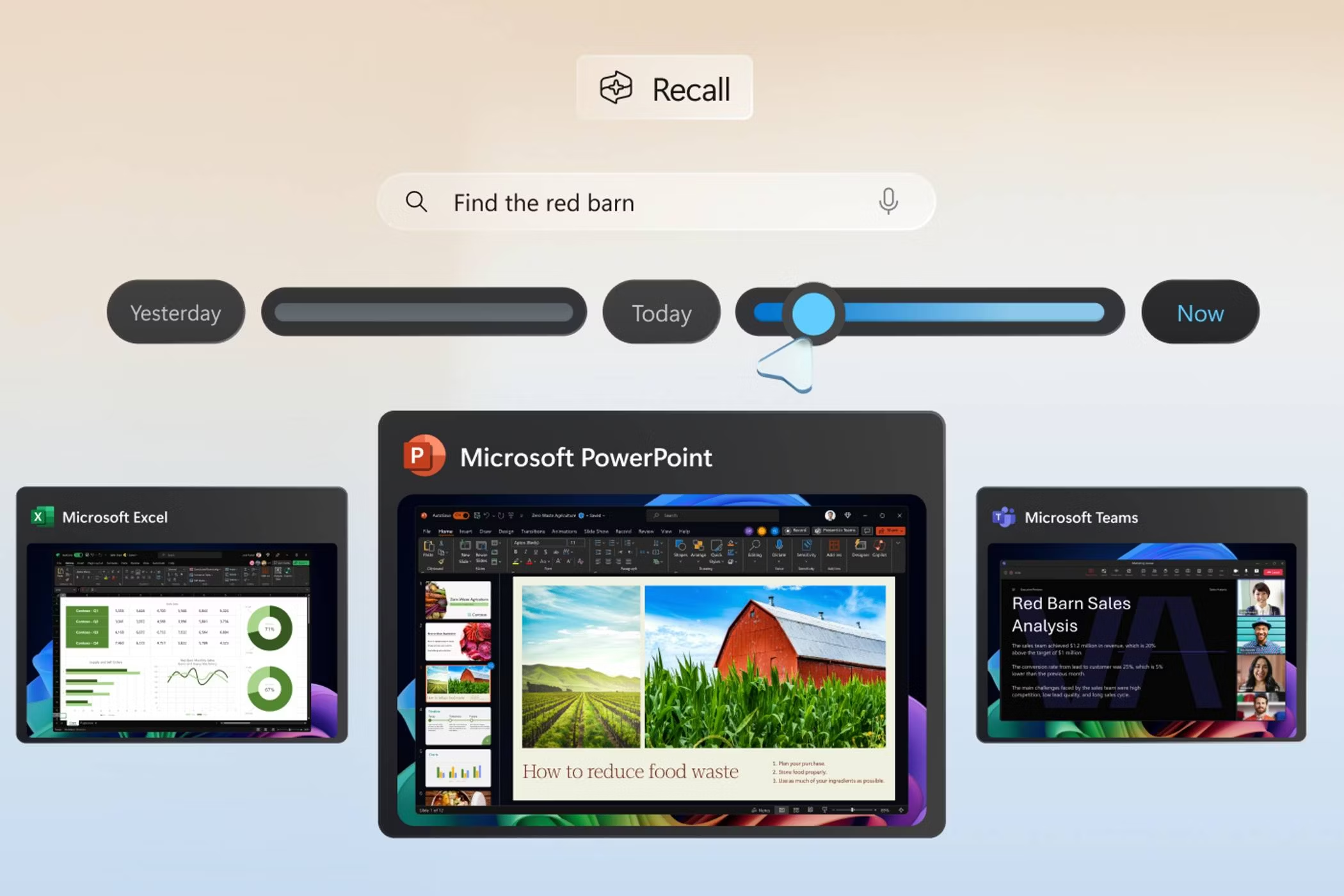Microsoft has released Recall in the Windows 11 Insider Preview Build 26120.2415 for users in the Dev Channel. This is the first time Recall has been available for regular testers to try, following a bungled initial rollout.
Recall is meant to help people keep track of their actions on their PCs. It was originally set to launch in June but was delayed to October. Currently, Recall is available for testing on Snapdragon-based Copilot+ PCs, and support for AMD and Intel-based Copilot+ PCs is expected to come later. There have been issues with the security of Recall, but Microsoft has been adamant that the service will be safe upon release.
This preview lets users try out Recall’s main features. They can search for past activities by describing what they were about or by looking through a visual timeline of images. Using AI, Recall helps find apps, websites, pictures, and documents based on user descriptions, like “pie chart,” or by browsing snapshots taken during a user’s session. Another feature called Click to Do allows users to act on text and images identified in these snapshots. With this, users can copy text and pictures, open files and websites, send emails based on recognized addresses, and edit images, such as blurring backgrounds or removing objects.
Unlike the first iteration, Recall is now encrypting the data on the user’s device. Users can unlock it using Windows Hello for security reasons. Microsoft has stated that it will not use any information for training, and users can manage their saved snapshots, choose specific apps or websites to exclude from recording, and delete snapshots whenever they want. Users can also pause snapshot saving, manage how much disk space Recall uses, or turn it off completely whenever they like.
Recall has faced security issues during its development. The initial versions of the feature had problems with security because they didn’t encrypt screenshots or the searchable database. This could put sensitive information, like bank details or health records, at risk if a device is hacked. Microsoft has promised to tackle these issues, which they say is why there have been several delays. The latest version requires Secure Boot and BitLocker to work, showing a stronger emphasis on security. It also includes steps to identify and prevent the saving of sensitive information such as credit card numbers, passwords, and personal IDs.
For businesses, the Recall feature is turned off by default on company computers. IT administrators can manage whether Recall is available and block saving snapshots from certain apps or websites. Employees need to choose to use it and enroll in Windows Hello for it to work.
Source: Microsoft


